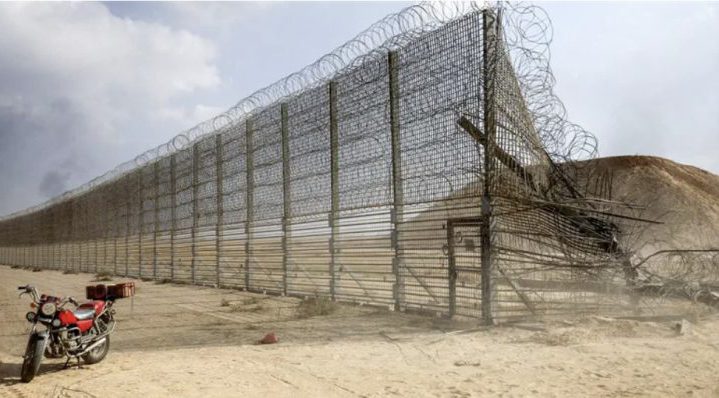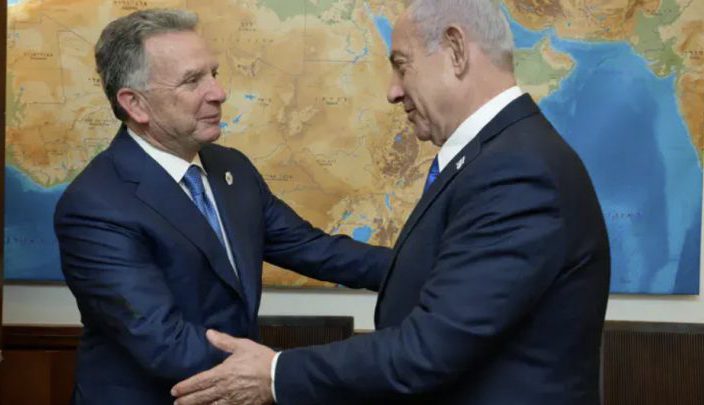The comprehensive inquiry into the terrorist attack on Kibbutz Nir Yitzhak reveals a series of shortcomings in the IDF’s preparedness and initial response, but commends the kibbutz’s civilian emergency squad and residents.
The IDF has presented the investigation of the battle of Kibbutz Nir Yitzhak during the October 7th massacre to the surviving residents of the kibbutz.
The investigation, which was completed by the former Southern Command commander, Major General Yaron Finkelman, examined the sequence of events and the performance of the Israeli forces who fought for the town.
The investigative team, headed by Brigadier General Itamar Ben-Haim and Colonel Eylon Peretz, reached a unanimous conclusion that the IDF had failed in its mission to defend the kibbutz and its residents from the attack.
The investigation highlighted the bravery and courage of the members of the kibbutz’s civilian emergency response team and residents, who engaged the terrorists and wounded them, thereby significantly reducing the scope of the casualties to the kibbutz.
During the massacre, five civilians were captured from Nir Yitzhak. Three of them were released in the first deal in November 2023, and the other two were rescued alive by Israeli forces.
The kibbutz’s civilian emergency squad, who fought with great valor, suffered heavy losses: six of their number were killed in action, and two of their bodies are still held in the Gaza Strip. Several other civilians were wounded.
The investigation shows that the attack on the kibbutz was carried out by some 85 terrorists, who entered the kibbutz through the main gate in three successive waves, and during their incursion committed acts of murder, abduction, and looting.
The investigation, which lasted some ten months, included lengthy interviews with residents of the kibbutz, members of the civilian emergency response team, and IDF forces and commanders who fought in the area. Information, messages, and other evidence were collected and carefully examined in order to create an accurate timeline of the events. The investigative team noted that there may be inaccuracies due to the complexity of the incident, and that further details may come to light in the future.
The investigation focused on the fighting in and around Kibbutz Nir Yitzhak, which was one of dozens of simultaneous foci during the massacre. The simultaneous attacks made it difficult for security forces to reach all the foci. This issue is being examined in depth in other IDF inquiries.
On the eve of the attack, the 934th Battalion of the Nahal Brigade (‘Kerem Shalom’) was deployed in the region, with one of its companies serving as a reserve and stationed at the Amitai base. With the onset of the attack, the battalion’s forces were deployed in forward positions along the border.
At 06:29, Hamas fired rockets at the western Negev communities, including Nir Yitzhak and military outposts. Terrorists invaded Israel by car and on foot, and within minutes the region was under a coordinated attack in which the battalion suffered a significant numerical disadvantage.
In the first stage, following rocket alerts, the members of the civilian emergency squad prepared themselves in their homes. Beginning at 06:31, reports were received of the intrusion of hundreds of armed terrorists into Israel, including the Nir Yitzhak area. At 06:41, the commander of the Sufa Company ordered his forces to move to defend the area and join the kibbutz.
At this point, all commanders were on the front lines and fighting, including a tank that began to shell the terrorists and killed over 100 of them, as well as damaging their vehicles, thereby significantly reducing the scope of the attack. The battle continued until the tank’s ammunition was exhausted and it was damaged.
In the second stage, around 06:50, the civilian emergency squad began to take up defensive perimeter positions within the kibbutz. Camp Sufa was under attack, and half its soldiers were trapped. At 07:10 the civilian emergency squad and the civilian emergency coordinator were in defensive positions. At 07:33 seven armed terrorists penetrated the kibbutz, and one of the civilian emergency squad members was killed in an attempt to stop them.
The terrorists set fire to a factory and left the area at about 07:45. By 09:06 there were no terrorists in the kibbutz, and during this time the members of the civilian emergency squad were patrolling and improving their positions. At 09:06, about 25 more terrorists arrived at the main gate. Two members of the civilian emergency squad who were fighting there were wounded and eventually killed in action. The other members of the civilian emergency squad, two residents and the civilian security coordinator, fought a protracted battle but were killed in action. The rest of the team then withdrew to defend the residents and called for reinforcements. Between 09:56 and 10:05 no terrorists were observed within the kibbutz.
In the third phase, beginning at 10:05, dozens of additional terrorists entered the kibbutz and committed acts of murder, abduction, and looting. They broke into dozens of homes and abducted civilians and three members of the civilian emergency squad. At 11:04 terrorists broke into a house and abducted five members of a family. By 13:28 all the terrorists had left the kibbutz.
Despite the dispatch of reinforcements, no force arrived before 13:30. The battle at the ‘Sufa’ camp and other skirmishes delayed the arrival of the forces. The fall of the civilian security coordinator and the disruption of the sector command caused confusion about the state of the kibbutz. Beginning at 13:30, special forces arrived and joined the civilian emergency squad, sweeping the kibbutz but encountering no terrorists. An armored force positioned itself outside the kibbutz and eliminated terrorists in the adjacent fields. At 20:00, all residents were evacuated from their homes to the kibbutz center.
The main conclusions of the investigation are that the IDF failed to defend the kibbutz, had insufficient preparation for a wide-scale invasion scenario, and delayed in sending reinforcements due to command chain damage and encounters en route. The reinforcements arrived late. The Air Force, tank, and the civilian emergency squad’s bravery helped prevent a significantly greater loss despite partial training and equipment and difficulty in creating a clear picture of the situation.





